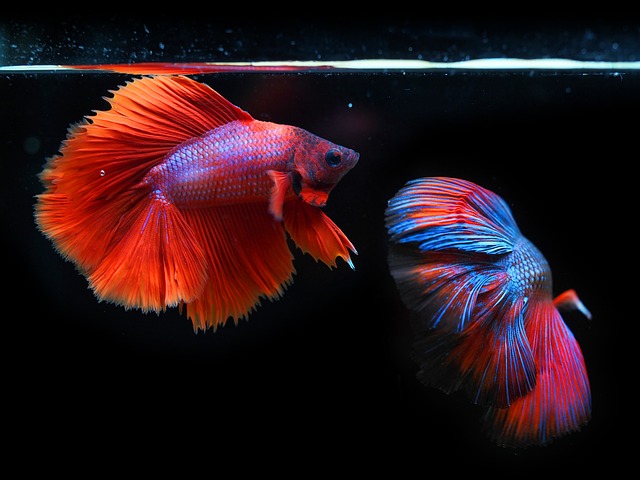Aquarium lighting is a critical component of aquascaping, offering ambiance and support for aquatic plants. Choosing between natural and artificial sources depends on tank size and desired aesthetic. Hardscaping elements like rocks and wood, paired with LED lights, create depth and natural-looking landscapes. Effective design leverages strategic lighting placement to highlight features, promote plant growth, and craft captivating underwater ecosystems. Manipulating color and intensity enhances depth and visual appeal in aquariums.
Explore the art of aquascaping and unlock the secrets to creating stunning depth and dimension in your aquarium. This comprehensive guide delves into essential lighting techniques, empowering enthusiasts to transform their aquatic habitats. From mastering basic lighting principles to leveraging LED technology for hardscaping elements, each section reveals expert tips. Learn how to sculpt plants for visual allure and manipulate color intensity to craft an enchanting underwater landscape. Discover the ultimate way to enhance your aquarium’s beauty with hardscaping for aquariums.
Understanding Aquarium Lighting Basics
Aquarium lighting is a fundamental aspect of creating an aesthetically pleasing and vibrant underwater landscape, often referred to as hardscaping for aquariums. It’s more than just illuminating the tank; it’s about setting the mood, enhancing visual appeal, and supporting the health of aquatic plants and organisms. Understanding aquarium lighting involves recognizing the difference between natural and artificial sources. Natural light is ideal but often limited in home aquariums, while artificial lighting offers greater control over intensity, spectrum, and duration.
The choice of lighting equipment depends on factors like tank size, desired plant growth, and aesthetic preferences. High-intensity discharge (HID) lights are powerful and suitable for larger tanks, encouraging lush plant life. LED lights are energy-efficient, offer a wide range of colors, and can mimic natural daylight cycles. When it comes to hardscaping design, proper lighting placement is key. Positioning lights at different heights and angles creates depth and dimension, highlighting specific areas of the aquarium. This technique, combined with strategic placement of decorative elements like rocks and plants, transforms a simple tank into a captivating underwater scene.
Incorporating Hardscaping Elements with LED Lights
Aquascaping has evolved beyond just planting and arranging aquatic plants; incorporating hardscaping elements, like rocks and wood, can significantly enhance depth and dimension in your aquarium. When combined with LED lights, these components create a stunning visual effect that mimics natural landscapes. LED lights offer several advantages for hardscaping aquariums. They are energy-efficient, long-lasting, and highly customizable in terms of color temperature and intensity, allowing you to create dramatic or subtle lighting schemes. By strategically placing LED strips under rocks or along wooden structures, you can highlight these hardscaping elements, drawing the viewer’s eye deeper into the aquarium.
This technique not only adds visual interest but also helps to define different zones within your aquatic landscape. Warmer light temperatures can evoke a cozy, inviting atmosphere in certain areas, while cooler temperatures can emphasize other sections, creating a sense of depth and complexity. Additionally, LED lights’ low heat output ensures that the hardscaping elements remain safe from damage, allowing you to experiment with various materials and designs without worrying about burning or drying out plants or substrates.
Shaping Plants for Depth and Visual Interest
Aquascapers can strategically shape plants to enhance depth and visual interest within aquariums, taking hardscape design principles into account. By selectively pruning or bending plants, you can create a layered effect that mimics natural underwater landscapes. Tall, upright plants placed in the background provide vertical dimension, while shorter, bushy species in the foreground add texture and contrast. This technique not only creates a visually appealing aquascape but also promotes healthy plant growth by ensuring each plant receives adequate light and space.
Curving and thinning stems can direct the viewer’s eye through the aquarium, guiding their gaze from one area to another. Additionally, pairing plants with different growth habits creates movement and dynamism. For instance, combining trailing plants along the water’s edge with upright species in the middle creates a sense of flow, making the aquarium feel more expansive and immersive. Incorporating these shaping techniques into your aquascaping routine allows for the creation of captivating underwater scenes that go beyond simple plant placement, transforming your aquarium into a vibrant, three-dimensional ecosystem.
Using Color and Intensity to Create Dimension
In aquascaping, using color and intensity manipulation is a powerful tool to create depth and dimension in your aquarium. By strategically adjusting lighting conditions, you can enhance the visual appeal of both live plants and hardscape features. Different colors of light reflect off surfaces and interact with aquatic flora differently, allowing you to bring out vibrant hues or create striking contrasts. For instance, blue light tends to make plants appear more vivid, while red light can stimulate growth and add warmth to wood and stone structures.
Intensity also plays a significant role in creating depth. High-intensity lights can cast dramatic shadows on hardscape elements, adding a sense of three-dimensionality to your aquarium. Conversely, lower intensity lights can create softer, more diffused shadows, suitable for shallower areas or where you want to emphasize the beauty of delicate plants and subtle details in your hardscaping for aquariums.
Aquascaping lighting techniques are a game-changer for creating depth, dimension, and visual interest in your aquarium. By understanding basic lighting principles, incorporating LED lights with hardscaping elements, shaping plants effectively, and playing with color and intensity, you can transform your aquatic landscape into a vibrant, three-dimensional masterpiece. Remember that the right lighting scheme not only enhances aesthetics but also supports the health of your aquatic ecosystem. Dive into these techniques to elevate your aquarium from ordinary to extraordinary.
